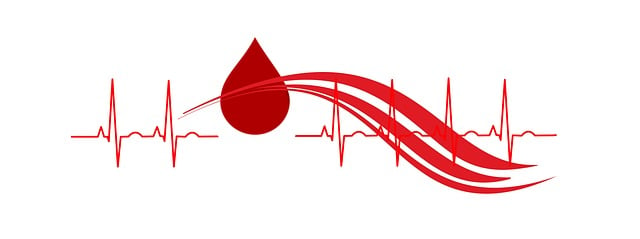Liver Function Tests (LFTs) are vital tools for assessing liver health, detecting early signs of disease, and guiding treatment plans. Key enzymes like ALT, AST, ALP, GGT, and bilirubin reveal conditions from inflammation to scarring. Regular LFTs are recommended for high-risk individuals and those with alcohol consumption, toxic exposure, diabetes, or obesity. Understanding normal enzyme levels helps interpret results accurately, enabling early intervention and preventing liver disease progression. Awareness of LFT importance is crucial for proactive liver health management.
A liver function test (LFT) is a crucial tool in detecting liver disease at an early stage, offering vital insights into your organ’s health. This comprehensive guide delves into LFTs, explaining what they measure and why they’re essential for timely detection. We’ll explore normal vs. abnormal results and the benefits of early intervention. Understanding these key indicators can empower you to take proactive steps for liver health maintenance.
- Understanding Liver Function Tests: What They Measure
- When and Why to Get a Complete Liver Function Test
- Interpreting Results: Normal vs. Abnormal Findings
- Early Detection: Benefits and Next Steps for Liver Disease
Understanding Liver Function Tests: What They Measure
Liver function tests (LFTs) are a set of blood tests that evaluate the health and efficiency of your liver. These tests measure various enzymes and proteins produced by the liver, helping to identify potential issues or abnormalities. LFTs can detect early signs of liver disease, such as inflammation, damage, or impairment, allowing for timely intervention and management.
Key markers include alanine aminotransferase (ALT) and aspartate aminotransferase (AST), which indicate liver cell damage; alkaline phosphatase (ALP) levels, elevated in cases of bile duct obstruction or liver scarring; gamma-glutamyl transferase (GGT), often raised due to alcohol consumption or certain medications; and bilirubin, a byproduct of red blood cell breakdown, indicating potential liver dysfunction. By analyzing these parameters, healthcare professionals can navigate the complex landscape of liver health, identifying potential risks and guiding appropriate care strategies.
When and Why to Get a Complete Liver Function Test
Knowing when to get a complete liver function test (LFT) is crucial for early detection of liver disease, as many conditions show no symptoms in their initial stages. It’s recommended that individuals at high risk or with certain health concerns undergo regular LFTs. This may include people with a history of excessive alcohol consumption, those exposed to toxic substances, or individuals with underlying medical conditions like diabetes or obesity.
Early detection through LFTs enables timely intervention and management of liver diseases. Even subtle abnormalities in liver function can be an indicator of potential issues, allowing healthcare providers to advise lifestyle changes or initiate treatments to prevent further damage. Regular screening is particularly important for those engaging in activities that may strain the liver, such as intense exercise or certain occupational exposures.
Interpreting Results: Normal vs. Abnormal Findings
When interpreting results of a liver function test, understanding what’s considered normal is crucial. A normal range for liver enzymes typically indicates that your liver is functioning well and there are no concerning abnormalities. Enzymes like ALT (alanine aminotransferase) and AST (aspartate aminotransferase) play a vital role in detecting liver damage or inflammation. If these levels are within the reference interval, it suggests minimal to no liver cell injury.
Conversely, abnormal findings can signal potential liver issues. Elevated levels of ALT and AST may indicate hepatitis, cirrhosis, or other liver diseases. Other markers like bilirubin, albumin, and prothrombin time (PT) also provide insights into overall liver health. An abnormal PT, for instance, could point to impaired liver function affecting blood clotting. Interpreting these results accurately alongside clinical symptoms and other diagnostic tools is key to early detection and effective management of liver diseases.
Early Detection: Benefits and Next Steps for Liver Disease
Early detection plays a pivotal role in managing liver disease effectively. By implementing regular liver function tests, healthcare professionals can identify potential issues at an early stage, allowing for prompt intervention and improved outcomes. These tests measure various enzymes and proteins in the blood, providing insights into liver health. Through routine screening, at-risk individuals can benefit from early treatment, which may include lifestyle modifications or specialized medical care.
Detecting liver disease in its incipient phases offers several advantages. It enables doctors to prevent the progression to more advanced stages, where treatments might be less effective. Additionally, early identification can help avoid complications and reduce the risk of liver failure. The next steps involve raising awareness about the importance of liver function tests, especially among those with risk factors such as obesity, diabetes, or a family history of liver issues. Educating individuals on the benefits of regular check-ups empowers them to take proactive measures for their liver health.
A complete liver function test (LFT) is a powerful tool in detecting liver disease early, offering crucial insights into the health of this vital organ. By measuring various enzymes and proteins, LFTs can identify abnormalities that may indicate issues like inflammation, scarring, or even cancer. Regular screening, especially for at-risk individuals, can significantly enhance treatment outcomes and quality of life. If abnormal results are found, further evaluation and specialized care can prevent further liver damage and promote timely intervention.
